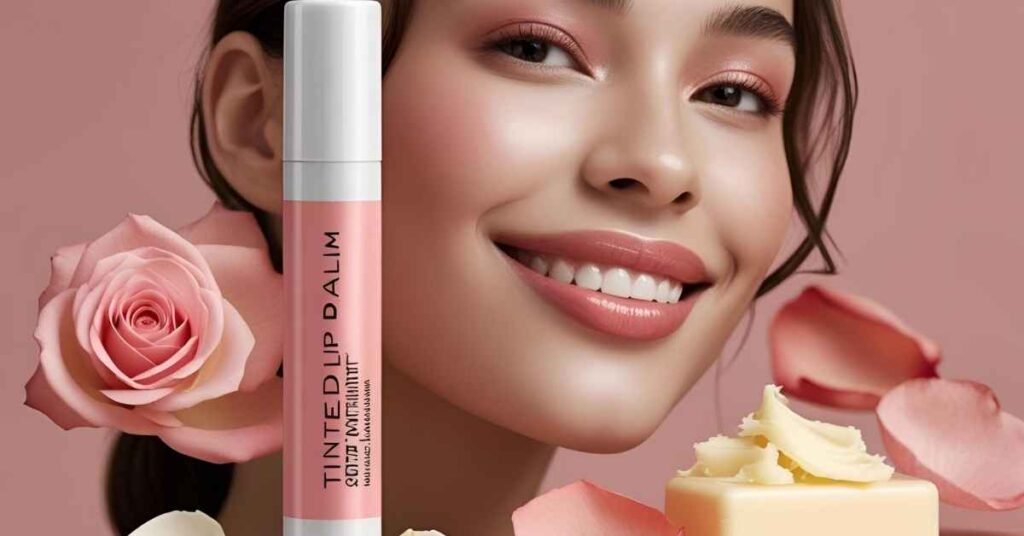Introduction
Tinted lip balms serve a dual purpose—moisturization and subtle coloration—making them a staple in both skincare and makeup routines. This guide provides a technical breakdown for cosmetic chemists to formulate a tinted lip balm that offers hydration, sun protection, natural tint, and smooth sensory experience while complying with global regulations including EU, ASEAN, and Indian markets.
Product Overview & Key Claims
This tinted lip balm is engineered to:
• ✅ Provide long-lasting hydration
• ✅ Deliver UV protection (SPF ~15–20)
• ✅ Add natural-looking color and gloss
• ✅ Soften and nourish lips with plant-based emollients
• ✅ Leave a non-sticky, smooth finish
Ingredient Analysis, Functional Roles & Recommended Levels
| INCI Name | Functional Role | Recommended Range (% w/w) |
| Octyldodecanol | Emollient, solvent, gloss enhancer | 10–15 |
| Hydrogenated Polyisobutene | Gloss agent, occlusive barrier | 10–20 |
| Microcrystalline Wax | Thickener, structure builder | 10–15 |
| Isopropyl Palmitate | Spreading agent, emollient | 5–10 |
| Beeswax | Film-former, occlusive, stabilizer | 5–10 |
| Polyethylene | Texture modifier, stick enhancer | 2–5 |
| Butyrospermum Parkii (Shea) Butter | Nourishing emollient | 3–6 |
| Bis-Diglyceryl Polyacyladipate-2 | Non-greasy emollient | 3–5 |
| Ethylhexyl Methoxycinnamate | UVB filter (SPF) | 2–7.5 |
| Butyl Methoxydibenzoylmethane | UVA filter | 0.5–3 |
| Ricinus Communis (Castor) Seed Oil | Shine, smooth glide | 3–6 |
| Tocopheryl Acetate | Antioxidant (Vitamin E) | 0.2–1 |
| Fragrance | Sensory appeal | 0.1–0.5 |
| Magnesium Ascorbyl Phosphate | Antioxidant, brightening | 0.5–2 |
| Simmondsia Chinensis (Jojoba) Oil | Skin-conditioning agent | 2–4 |
| Prunus Amygdalus Dulcis (Almond) Oil | Conditioning oil | 2–4 |
| Isopropyl Titanium Triisostearate | Pigment dispersant | 0.2–1 |
| Pigments (Mica, Iron Oxides, Lakes) | Colorants | 0.5–5 |
Lab-Scale Sample Batch (100 g)
| Phase | Ingredient | % w/w | Amount (g) |
| A | Octyldodecanol | 12 | 12 |
| A | Hydrogenated Polyisobutene | 15 | 15 |
| A | Microcrystalline Wax | 12 | 12 |
| A | Isopropyl Palmitate | 7 | 7 |
| A | Beeswax | 6 | 6 |
| A | Polyethylene | 3 | 3 |
| A | Shea Butter | 4 | 4 |
| A | Bis-Diglyceryl Polyacyladipate-2 | 4 | 4 |
| A | Castor Seed Oil | 4 | 4 |
| A | Ethylhexyl Methoxycinnamate | 5 | 5 |
| A | Butyl Methoxydibenzoylmethane | 2 | 2 |
| B | Jojoba Seed Oil | 2.5 | 2.5 |
| B | Sweet Almond Oil | 2.5 | 2.5 |
| B | Magnesium Ascorbyl Phosphate | 1 | 1 |
| B | Tocopheryl Acetate | 0.5 | 0.5 |
| B | Isopropyl Titanium Triisostearate | 0.5 | 0.5 |
| B | Pigments (CI 15850, 77491, 77891) | 2 | 2 |
| C | Fragrance | 0.3 | 0.3 |
Manufacturing Protocol
- Phase A – Melting & Base Preparation
- Combine Octyldodecanol, Hydrogenated Polyisobutene, Isopropyl Palmitate, waxes, oils, and UV filters in a stainless steel vessel.
- Heat to 80–85°C with constant stirring until fully melted and homogenous.
- Phase B – Color & Actives
- Disperse pigments in a small portion of melted base with Isopropyl Titanium Triisostearate.
- Add this pigment dispersion to Phase A under slow stirring for uniform tint.
- Incorporate antioxidants and plant oils.
- Phase C – Cooling & Fragrance Addition
- Cool to 60°C, add fragrance and stir gently.
- Pour into pre-heated lip balm molds or twist-up tubes at ~55–60°C.
Color Matching & Labeling
- Blend iron oxides and lakes in varying ratios to achieve desired berry-pink shade.
- Perform visual and swatch testing for consistent tint.
- Declare pigments as “May Contain (+/-)” per FDA and EU labeling norms.
Stability & Safety Testing
| Test | Condition | Acceptance Criteria |
| Freeze-thaw | -5°C/25°C (3 cycles) | No bleeding or separation |
| Heat Stability | 40°C for 3 months | No sweating or hardening |
| UV Stability | Exposure to daylight | No pigment fade or odor change |
| Micro Test | ISO 21149 (if applicable) | No microbial growth |
| Heavy Metals | ICP-MS analysis | Compliant with regulatory limits |
Regulatory Considerations
- Use FDA/EU approved D&C/Lake pigments only.
- Keep UV filter actives within legal concentration limits per region.
- Declare fragrance allergens as per EU Regulation (EC) No. 1223/2009.
- Include INCI list, SPF value (if claimed), PAO symbol, and batch code on labels.
Packaging Recommendations
- Use air-tight twist-up tubes or balm pots to protect integrity.
- Avoid transparent packaging to minimize UV-induced oxidation.
- Label clearly with shade name, claims, SPF, and INCI list.
Innovation Tips
- Add shimmer with synthetic mica or pearl pigments for visual appeal.
- Explore plant waxes like Candelilla for vegan-friendly claims.
- Incorporate berry extracts or natural antioxidants such as cranberry seed oil.
- Develop a tinted balm range paired with matching cheek tints for brand extension.
Final Thoughts
Formulating a premium tinted lip balm requires a harmonious balance of pigment dispersion, emolliency, SPF efficacy, and a pleasing sensorial profile. This guide equips cosmetic chemists to develop safe, high-performance lip balms ready for diverse global markets.
#CosmeticFormulation #SkincareInnovation #BeautyProductDevelopment #FormulationScience #CustomSkincare #PrivateLabelSkincare #CleanBeautyFormulation #LabToMarket #FormulaDevelopment #Formula #HowToMake #HowToFormulate #SkincareRND #CosmeticScience #HighPerformanceFormulas #FromIdeaToLaunch #RegulatoryCompliant #FormulaAlchemy
Need help with product development, scale-up, or private label launch?
Partner with FormulaAlchemy to transform your vision into reality.
